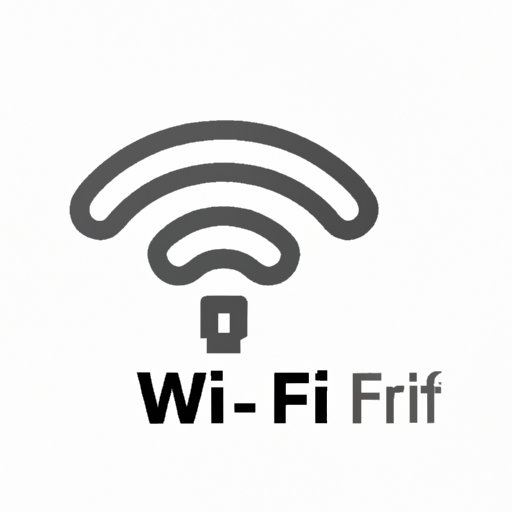
Introduction
Not having access to wifi at home can be a frustrating problem, especially in today’s world where internet connectivity is a basic need. Buying an internet plan can be expensive, but luckily, there are a number of ways to get free wifi at home. In this article, we will explore various methods that can help you stay connected without breaking the bank.
Utilize public wifi hotspots
Public wifi hotspots are wifi networks that are available to the public in various locations like cafes, libraries, and community centers. Connecting to these hotspots can help get you online without spending any money. However, it’s important to ensure that the network you connect to is secure and safe for online activities.
When attempting to connect to a public wifi hotspot, look for one that is password-protected with a WPA2 security protocol. These networks are generally safe for browsing and online activities like email and social media. Avoid connecting to open networks or those that don’t require a password. These can be unsecured and prone to hacking or other malicious activities.
While utilizing public wifi hotspots can save you money, there are a few drawbacks such as slower speeds and limited connectivity in some locations. Additionally, you may have to share the network with other people, which could lead to slow internet speeds.
Use a wifi antenna
A wifi antenna is a device that amplifies existing wifi signals, increasing their range and strength. These antennas come in different types like indoor, outdoor, directional, and omnidirectional antennas. Based on the size and shape of your home, you can choose the best antenna to suit your needs.
Setting up a wifi antenna involves pointing it towards the existing wifi signal and plugging it into your computer. You may need to adjust the position several times, depending on feedback from your computer, to find the location with the best connectivity.
While wifi antennas can be expensive, they offer a long-term solution to getting free wifi at home. However, they may require professional installation, which can add to the cost. Also, the strength and stability of existing wifi signals may limit the effectiveness of the antenna.
Connect to nearby networks
You can also connect to public wifi networks that are close to your home by using wifi extenders or network adapters. Wifi extenders work by capturing the wifi signal from a nearby network and then amplifying it throughout your home. Network adapters, on the other hand, enable you to connect to a public wifi network using an Ethernet cable.
Setting up wifi extenders and network adapters requires plugging in the devices and configuring the settings on your computer. You will also need to ensure that the network you’re extending or connecting to is secure and safe for online activities.
The main advantage of wifi extenders and network adapters is that they provide a more stable and secure connection to public wifi networks. However, they may not work well in areas where there is limited coverage or where the Wifi signal is weak.
Take advantage of free trials
Many internet service providers (ISPs) and other service providers offer free trials for their wifi services. These trials can enable you to enjoy a free wifi connection for a specified period. Before signing up for these trials, ensure that they are being offered by legitimate service providers and that there is no hidden cost involved.
To take advantage of these free trials, you’ll need to sign up for them with your personal details. After the trial period is over, make sure you cancel the subscription to avoid being charged for the service.
The main advantage of free trials is that they offer a free and reliable wifi connection for a specific period. However, you might need to keep searching for these trials regularly, and you might end up being charged for the service after the trial period is over.
Leech off neighbors (controversial option)
Another option is to “leech off” a neighbor’s wifi network. This involves detecting nearby wifi networks that are unsecured and connecting to them without the owner’s knowledge or permission. It’s important to note that this option is illegal and can lead to legal consequences.
However, if you still decide to do it, ensure to connect to an unsecured network that doesn’t require a password. Also, avoid doing anything illegal or malicious activities online, as it can be traced back to your device and could get you in trouble.
Overall, we suggest avoiding this option and choosing other free wifi alternatives.
DIY hotspot
A DIY hotspot is a personal wifi network you can create using your cellphone. To do this, you will need a cell phone with a data plan that allows hotspot creation and sharing.
These data plans come in different sizes, with varying prices. Choose one that fits your data usage needs and budget.
After selecting a data plan, access the hotspot feature on your device and set up a wifi network. You can then share the network with other devices at home.
The main advantage of DIY hotspot is that it’s a cost-effective way to get free wifi at home. However, it’s only suitable for light internet usage and can be expensive if you exceed your data plan limits.
Conclusion
Getting free wifi at home is a possibility, with several options available. Each method has its own unique benefits and drawbacks, and it’s up to you to choose the right one for your needs.
From public wifi hotspots to wifi antennas, and DIY hotspots to wifi extenders, there’s a solution for every budget and internet usage need. Just be sure to evaluate each option’s safety, security, and legal implications before choosing.




